
Whenever you do something for the first time, you will make mistakes.
And most of those mistakes are the same ones made by other beginners doing the same thing.
That’s why it is important to be aware of the most common mistakes new ball python owners make.
Knowing what they are makes it possible to avoid them altogether.
You may still make some mistakes.
But at least you won’t make all of the common ones, too.
And that gives you a huge advantage as a beginning snake keeper. So keep reading to ensure you avoid making any of the mistakes described below with your pet ball python.
8 Common Mistakes New Ball Python Owners Make
Knowing about the following common mistakes will help you avoid them and give you a huge advantage as a new ball python owner. That means a much happier life for both you and your pet snake.
Inadequate Research And Underestimating The Commitment Involved
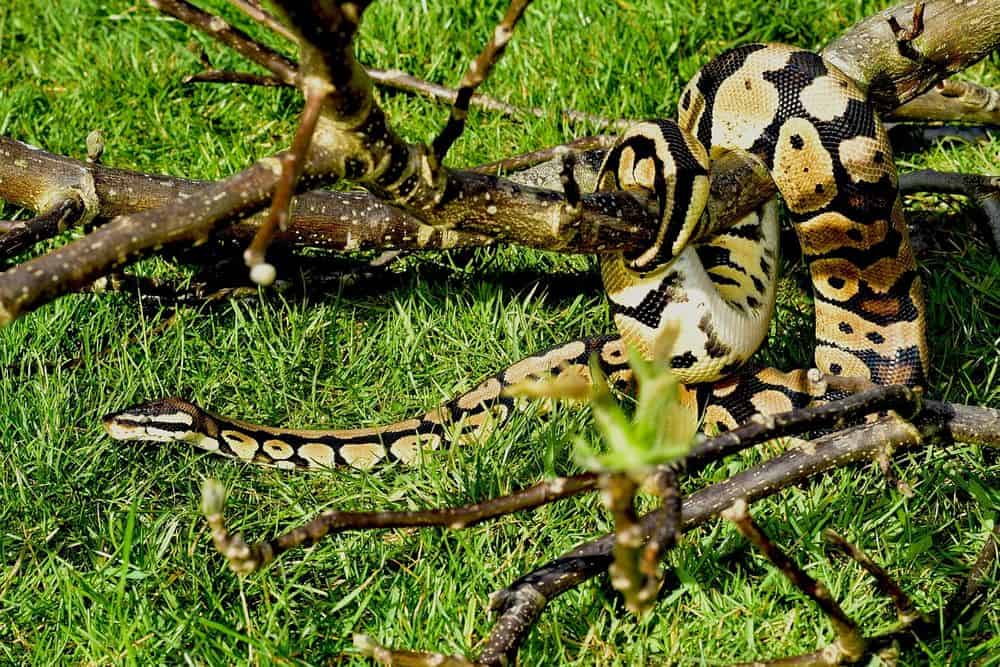
One of the biggest mistakes newbie ball python owners make is not doing adequate research beforehand. It is important to read everything you can about ball pythons and understand the long-term commitment and risks of keeping one as a pet. The average ball python lifespan is much longer than you probably think.
Talk to fellow owners, meet up with breeders, attend reptile shows, and read care guidebooks specific to ball pythons. Proper care of a ball python involves maintaining specific humidity and temperature levels, meeting the snake’s dietary needs, and ensuring a suitable habitat.
It is especially important to recognize that buying a ball python should never be an impulse decision. You definitely need to be aware of the costs of owning a ball python.
Costs can be significant, including expenses for food, vet bills, and equipment. You also need to understand that ball pythons can live for several decades. Getting one is definitely a long-term commitment.
Buying A Ball Python From Random Breeders Without Reputation Check
Another common mistake is not purchasing a ball python from a reputable breeder. Many new owners buy their snakes randomly off the internet from so-called basement breeders.
To avoid this, always consult your local snake committee or read reviews and comments about breeders on platforms like Morph Market or social media.
Ask the breeder critical questions such as:
- What is the snake eating and how often?
- Has it ever refused a meal?
- Do you have a feed chart for it?
- Did its first shed go well?
- Do you have pictures of the parents?
Also, inquire about the snake’s temperature and humidity needs. A good breeder will patiently answer all your questions. If possible, visit the breeder to see how they keep their reptiles. I have an entire article on how to choose a healthy ball python from a breeder or pet store.
Not Providing A Suitable Enclosure
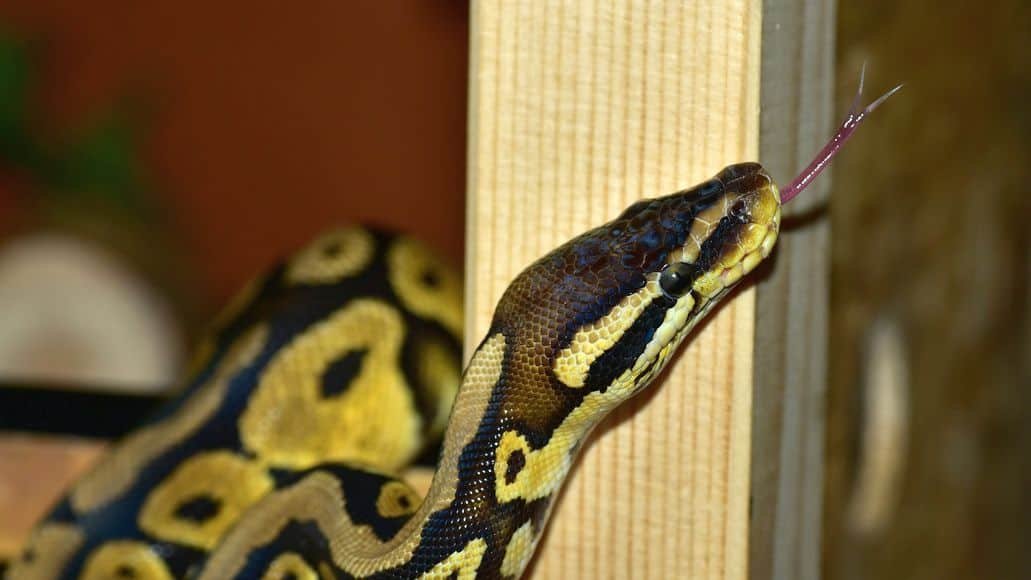
Another mistake ball python owners make is buying the enclosure before they buy the snake. A ball python will only reach its full adult size after about three years.
It is essential to choose an appropriate habitat for your ball python based on the snake’s eventual adult size. Always opt for the largest habitat possible, with 40 gallons or larger being ideal for adult ball pythons.
A ball python also needs enrichment items in its enclosure, like thick branches, plants, cork logs, flat rocks, and hiding areas, to mimic its natural environment. A couple of plastic hides and a thin dollar-store vine just won’t cut it. You can also set up a bioactive enclosure for your ball python.
The enclosure should also be well-ventilated and have a tight lid to prevent escapes. Some owners mistakenly buy screen cages. These are inappropriate, because they cause huge humidity losses.
Some owners house their snakes in glass terrariums, which are highly unsuitable as well. They make the snake feel exposed and cause stress. In their natural habitat, ball pythons live in holes or burrows, so they require a secure and enclosed environment to feel safe.
Avoid placing hot rocks in the enclosure. Pet stores often promote these products but they heat the enclosures unevenly and could even burn your pet.
Not Providing An Optimum Environment
Ball pythons need optimum humidity and temperature levels to stay healthy. They also need both a warm and a cool area to regulate their body temperature. Not using a thermostat can cause serious burns on the snake or could end up making it too cold.
These snakes need humidity levels of 40 to 60% (to be increased to at least 70% during shedding). Your python could suffer from respiratory issues, which are a common health problem in ball pythons, if you fail to provide the proper humidity.
Not Buying The Appropriate Equipment
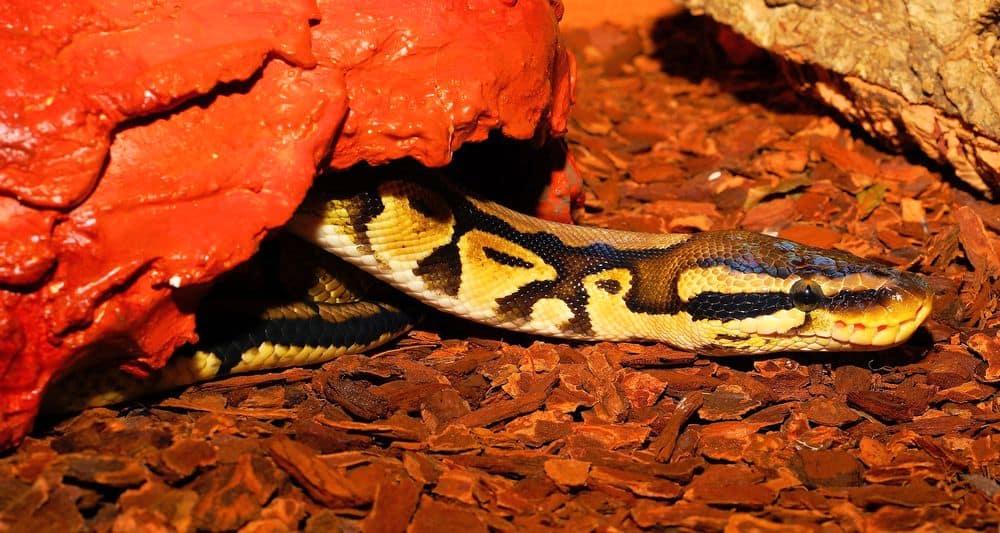
Another mistake newbie snake owners make is not buying the proper equipment or trying to save money on cheap items for their ball python enclosure. You should invest in an infrared temperature gun, digital thermometer, and hygrometer to monitor and maintain proper conditions.
Many owners overlook items like digital scales, feeding tongs, and necessary supplements like calcium and multivitamins for their pets. By skimping on these essentials, they end up compromising the health and well-being of their ball python.
Some owners use only heat bulbs to warm up their snake’s enclosure. Heat bulbs can quickly suck out the enclosure’s humidity. Ball pythons need optimum humidity and they also need belly heat first.
Therefore, the best heat sources to use for ball python enclosures are heat mats like these, heat cables, or heat tapes. If you do use a heat bulb, use it as a secondary source of heat and not the primary.
Over/Underestimating How Much A Ball Python Eats
Pet snakes often end up being obese. Most newbie ball python owners overfeed their snakes because they don’t know what a healthy ball python looks like. A lean, muscular snake is what you should aim for.
Similarly, an underfed snake could end up malnourished, fall sick frequently, or even die. Feeding a ball python is a science and you must do your research well. Always consult a vet specializing in exotic animals to ensure you are on the right track. This article covers how often a ball python should eat.
Overhandling The Snake
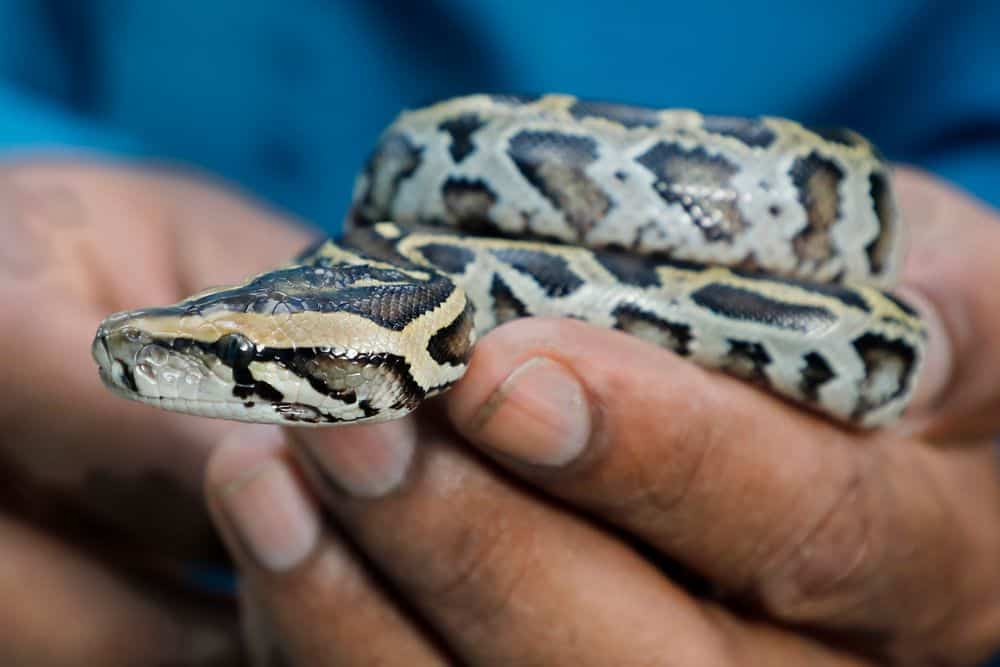
Another mistake new ball python owners make is overhandling their snake. Unlike a cuddly puppy, ball pythons do not enjoy frequent handling. It causes immense stress on the snake.
Many owners misinterpret their snake’s natural behavior as affection, leading to excessive handling. This stress can negatively impact your snake’s health, potentially making it ill.
It is crucial to understand and respect the natural behavior of ball pythons to provide them with a low-stress environment, handling them minimally and only when necessary. It is also important to build trust and bond with your new ball python, before you attempt to handle it.
Believing Everything The So-Called Experts Say
Another common mistake of newbie ball python owners is getting sucked into the “know-it-all” attitude of the ball python community. Many owners get overwhelmed with the conflicting advice they receive from self-proclaimed experts.
Yes, it is important to seek information and guidance. But you should be discerning about the sources you trust. Stick to reputable breeders, veterinarians, and well-researched resources for accurate information.
Trusting unreliable sources can lead to improper care practices and harm your ball python’s health. Always cross-reference information and prioritize your snake’s well-being over the pressure to conform to community opinions.
Most Common Mistakes Of Beginning Ball Python Owners: Final Thoughts
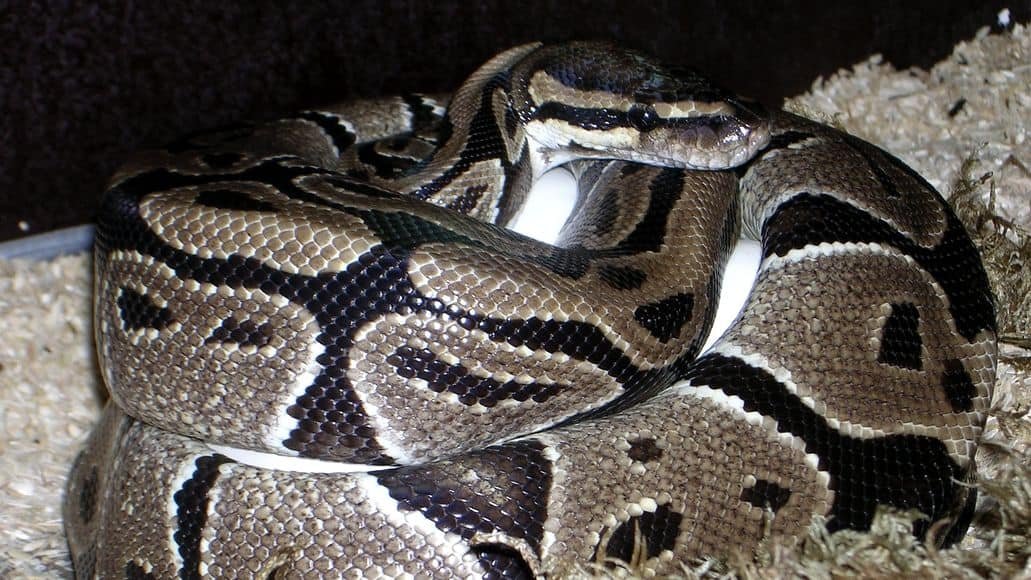
Owning a ball python can be a rewarding experience, but it requires careful preparation and ongoing dedication. By avoiding these common mistakes new ball python owners make, you can provide a healthier, happier life for their serpentine companions.
Remember that proper research, selecting a reputable breeder, creating an appropriate habitat, maintaining optimal environmental conditions, investing in quality equipment, and understanding your snake’s needs are all crucial factors in successful ball python ownership.
It’s important to recognize that ball pythons have specific requirements that differ from other pets, and even many other snake species. Meeting these needs is essential for their well-being.
By learning from the experiences of other owners and staying informed about best practices, you can ensure that your ball python thrives in your care. Responsible pet ownership is an ongoing process of learning and adapting to provide the best possible life for your scaly friend.
Leave a Reply